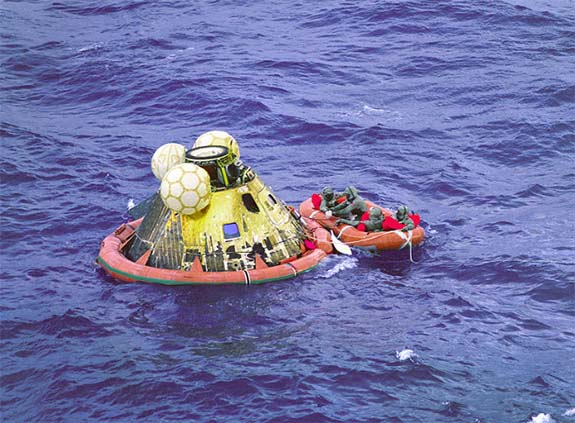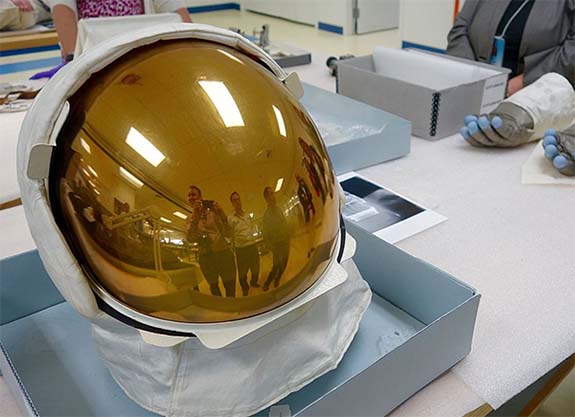Fifty years ago today, the three-man crew of Apollo 11 returned triumphantly from their historic trip to the moon, splashing down in the Pacific Ocean, 812 miles southwest of Hawaii.
For the past week, much has been written and broadcast about the first lunar landing, but what most people still don't know is how much scientists at NASA depended on gold’s amazing characteristics — reflectance, durability, conductivity and physical workability — to ensure a safe and successful mission.
When Neil Armstrong stepped onto the lunar surface and proclaimed, "That's one small step for man, one giant leap for mankind," his eyes were protected by a visor plated with an ultra-thin layer of gold.
Both he and fellow moon walker Buzz Aldrin were outfitted with what NASA calls a Lunar Extravehicular Visor Assembly, or LEVA for short. Gold does an excellent job of reflecting infrared light while letting in visible light, so NASA scientists coated the visors with a gold layer so thin — 0.000002 inches — that astronauts could see through it.
In 2016, photographer Steve Jurvetson enjoyed a "backstage tour" of the Smithsonian restoration labs where scientists were working on a batch of Armstrong artifacts from the Apollo 11 mission. Among the items was Armstrong's helmet, which is seen in the photo, above.
Today, many satellites are wrapped in gold-coated mylar sheets to protect them from solar heat, and their micro-components are often made of gold, since the element is an excellent conductor while resisting corrosion and the buildup of static electricity.
Gold is also nature’s most malleable metal. That means that it can be pounded so thin that one ounce of gold could cover about 100 square feet of a surface. The American Museum of Natural History (AMNH) calculated that it would take 576 ounces (or just 36 pounds) of gold to completely cover a football field.
Gold leaf typically measures 0.18 microns in thickness (about 7 millionths of an inch) and, according to AMNH, a stack of 7,055 sheets would be no thicker than the width of a dime.
The element is also ductile, which means that gold can be made into the thinnest wire. The AMNH notes that one ounce of gold can be drawn into 50 miles of wire, five microns thick.
Credit: Splashdown image via NASA (Public domain). Visor image by Steve Jurvetson from Menlo Park, USA [CC BY 2.0], via Wikimedia Commons.


